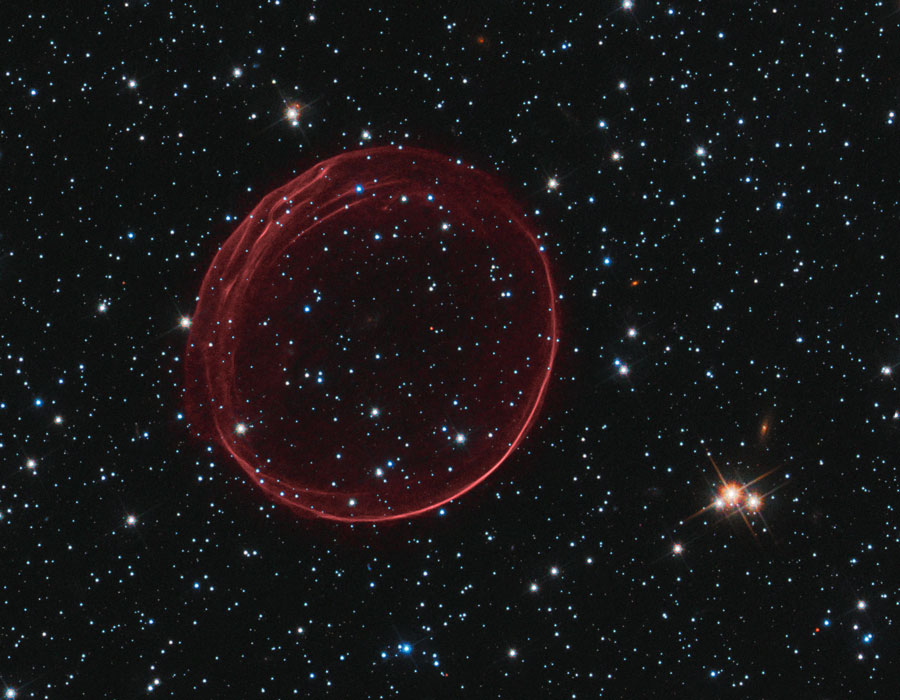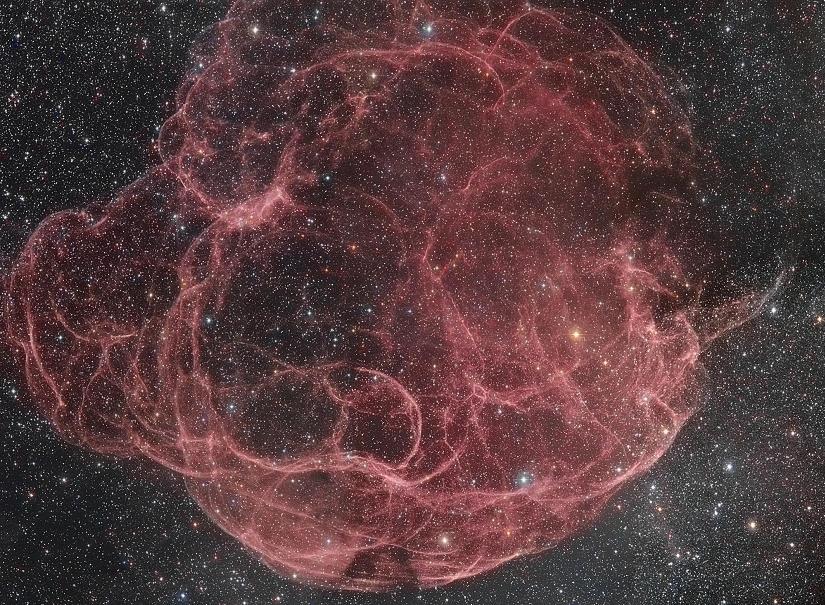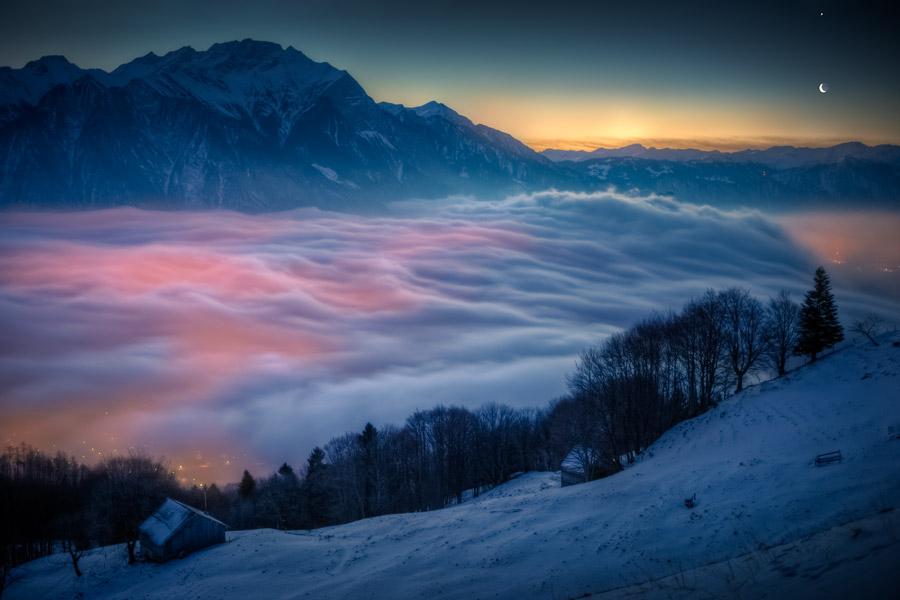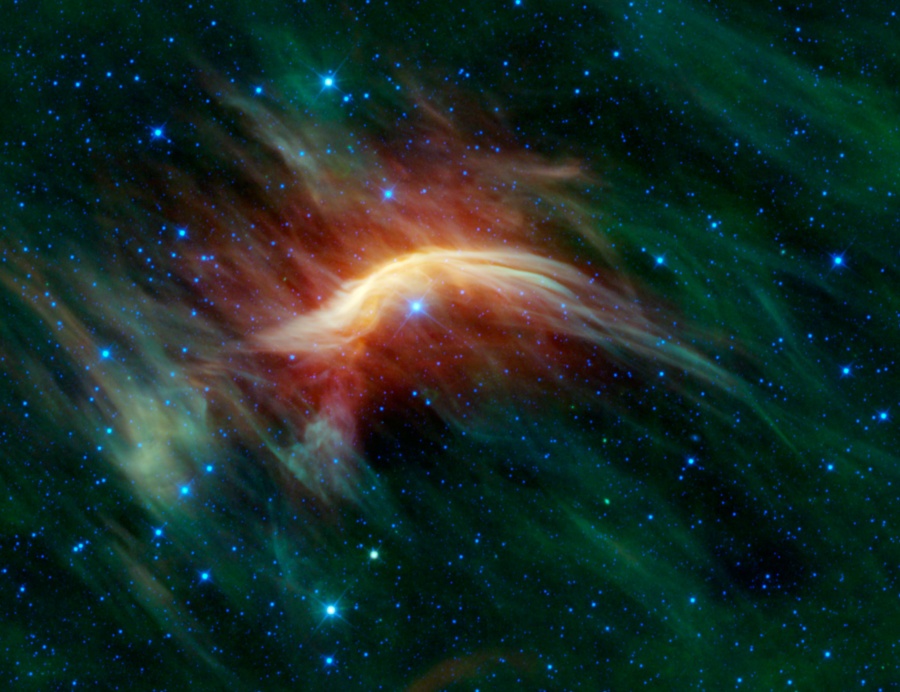Astronomer Project -- Henrietta Leavitt
Hennrietta Swan Leavitt was born on July 4, 1868 in Cambridge, Massachusetts to Congregational church minister George Roswell Leavitt and his wife Henrietta Swan (Kendrick). As a young girl, her family moved to Cleveland, Ohio. She attended Oberlin College and then graduated in 1892 from the Society for the Collegiate Instruction for Women, now known as Radcliffe College. In her senior year of college, Leavitt took her first astronomy course, earning an A- and cementing her interest in the subject. Pursuing the subject, she began graduate work at Harvard University, accepting a position as one of Edward Charles Pickering's computers in the Harvard College Observatory, working for $0.30 an hour. Pickering hired a number of women to measure and catalog the brightness of stars in the observatory's photographic plate collection. Tedious and menial work, Pickering sought to fill the role with women, thus earning his observatory the name "Pickering's Harem." Women in the early 1900's were not allowed to look through telescopes and were not given freedom to work theory. So, even though Henrietta Leavitt had the potential and the knowledge, she was not permitted to maximize her full possibilites.
She was chiefly in charge of cataloguing variable stars, stars whose brightness weakens and strengthens in a recognizable pattern. Studying the Magellanic Clouds, neighbor galaxies to the Milky Way, she discovered 1,777 variable stars. In 1908 she published her results in the Annals of the Astronomical Observatory of Harvard College, noting that a few of the variables showed a pattern: brighter ones appeared to have longer periods. After further investigation, Leavitt was able to classify certain stars as Cepheid variables, stars with a well defined relationship between luminosity and pulsation period. "A straight line can be readily drawn among each of the two series of points corresponding to maxima and minima," Leavitt wrote of her study "thus showing that there is a simple relation between the brightness of the variable and their periods". Based on the period-luminosity variable, Leavitt determined Cepheid Scale Distances which have been used to determine absolute magnitude beyond the realm of parallax measurements. Prior to her discovery, it was not known that there were other galaxies outside of the Milky Way, because the distances were to great for parallax. Upon her discovery, Edwin Hubble detected the Andromeda Galaxy and the scientific community confirmed that the universe was much bigger than just the Milky Way.
Had Henrietta been allowed the opportunity to pursue her discovery further and had she not died of cancer in 1921, she surely would have contributed greatly to the measurement of the cosmos. Paperwork for her Nobel Prize began in 1924 without knowledge that she had died three years earlier. Hubble himself posits that Leavitt deserved a Nobel. Leavitt was a member of Phi Beta Kappa, the American Association of University Women, the American Astronomical and Astrophysical Society, the American Association for the Advancement of Science, and an honorary member of the American Association of Variable Star Observers. Her early passing was seen as a tragedy by her colleagues for reasons that went beyond her scientific achievements.
Thursday, February 24, 2011
Friday, February 18, 2011
The Works Pertaining to Henrietta Leavitt that I Intend to Use on my Quarter 3 Astronomer Project
"A Science Odyssey: People and Discoveries: Henrietta Leavitt." PBS: Public Broadcasting Service. Web. 19 Feb. 2011. http://www.pbs.org/wgbh/aso/databank/entries/baleav.html.
Dictionary of Science Biography. C. Gillispie, editor Charles Scribner's Sons. 1981.
Dictionary of Science Biography. C. Gillispie, editor Charles Scribner's Sons. 1981.
"Henrietta Leavitt Biography | BookRags.com." BookRags.com | Study Guides, Lesson Plans, Book Summaries and More. Web. 19 Feb. 2011. <http://www.bookrags.com/biography/henrietta-leavitt-wop/>.
Sunday, February 13, 2011
APOD 3.4
Apparently, I'm impressed by supernova remnants, because here we have yet another post about supernova remnants. Let us become aquainted with SNR 0509-67.5. SNR 0509 spans about 23 light years and lies about 160,000 light years away toward the constellation of the Dorado. The red coloration is attributed to Hubble's filter allowing only light emitted by energetic hydrogen, in red saturation, to be seen. We're not really sure the precise reason for the ripples you see here, but we know the story behind the broader, red glowing ring. The expansion speeds and light echoes relate it to an Type Ia supernova, the explosion of a white dwarf star, that occured 400 years ago.
APOD 3.3
Simeis 147: Supernova Remnant
This supernova remnant has an estimated age of about 40,000 years - meaning light from the massive stellar explosion first reached Earth 40,000 years ago. It is in the direction of Taurus and spans nearly three degrees of the sky (six full moons). Meaning that at a distance of 3,000 lightyears, the width of this debris cloud is about 150 light years wide. The cosmic catastrophe that left behind this remnant also left a pulsar, which is the still spinning core of the original star. The thought of the core still spinning is kind of eerie to me...
This supernova remnant has an estimated age of about 40,000 years - meaning light from the massive stellar explosion first reached Earth 40,000 years ago. It is in the direction of Taurus and spans nearly three degrees of the sky (six full moons). Meaning that at a distance of 3,000 lightyears, the width of this debris cloud is about 150 light years wide. The cosmic catastrophe that left behind this remnant also left a pulsar, which is the still spinning core of the original star. The thought of the core still spinning is kind of eerie to me...
The Night Sky 2/10/11
Twas about 9:00 when I ventured into the cold night, star chart in hand, to observe the happenings of the sky. I am pleased to report that my experience was successful. My fears that I wouldn't be able to locate anything were silly and proven no longer viable soon after I gained my bearings and realized that my fears of the winter sky were irrational, and that hey, the winter sky isn't so bad! Immediately, I saw Orion. He doesn't take much effort to find. And I looked at M42, the stellar nursery in the hilt of his sword with binoculars and was very impressed. There were a bunch of stars concentrated in that one area and I thought it was really cool. Near Orion is Taurus, the bull with its signature V shape. I viewed with binocs the Pleaides and the Hyades, even though I've seen them plenty before. I looked for Mr. Percival's tried and true G shape in the winter sky and it turned out pretty well. Castor and Pollux in Gemini? Saw it. Capella in Auriga? Saw it. Sirius in Canis Major? Saw it. It was a good time, but I really want to go to a class stargaze soon so I can get even more comfortable with the winter sky.
APOD 3.2
APOD 3.1
Let us begin this ode to a runaway star by noting the size of this stellar juggernaut. Zeta Oph clocks in at 20 times more massive than the sun and 65,000 times more luminous. Zeta Oph would be one of the brighter stars in the sky if it weren't for the obscuration of it by the surrounding interstellar dust. So what makes Zeta Oph so cool, is that it's actually being propelled through space at a speed of 24 kilometers per second. Probably once a star in a binary system, its partner exploded in a supernova thus jetting Zeta Oph onto a never ending path into empty space. The interstellar gas and dust that surrounds this star, though a slight hindrance to our ability to view it in visible light, makes for a very awesome picture in the infrared. The calm green clouds on the outsides of the star, the brighter, hotter red clouds are seen due to teh amounts of ultraviolet radiaion emitted that heats up the clouds, and the yellow clouds of the bow shock. As the stellar wind pushes through all kinds of other interstellar stuff, it compress it causing it to glow so brightly in the infrared.
Subscribe to:
Posts (Atom)



